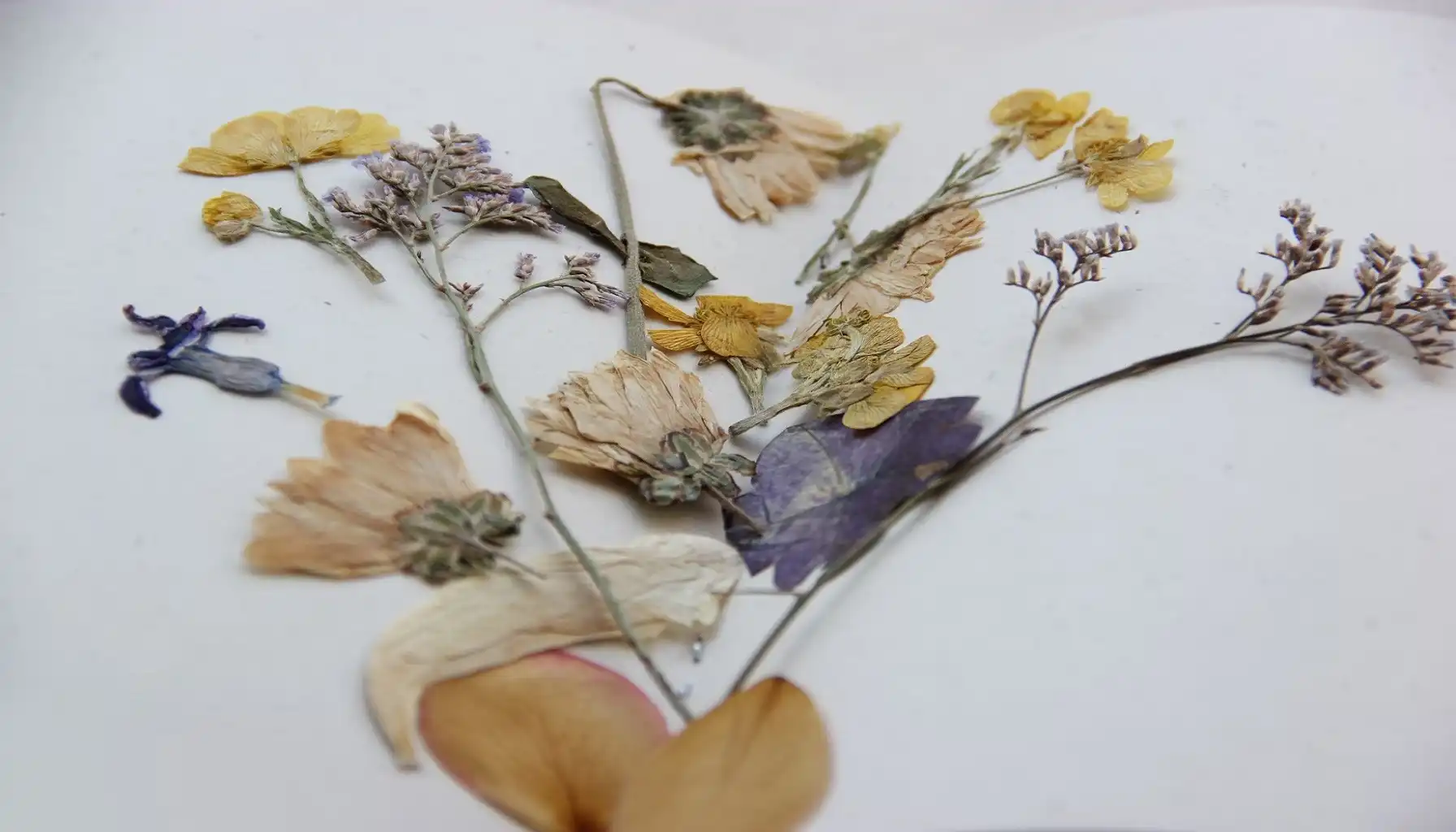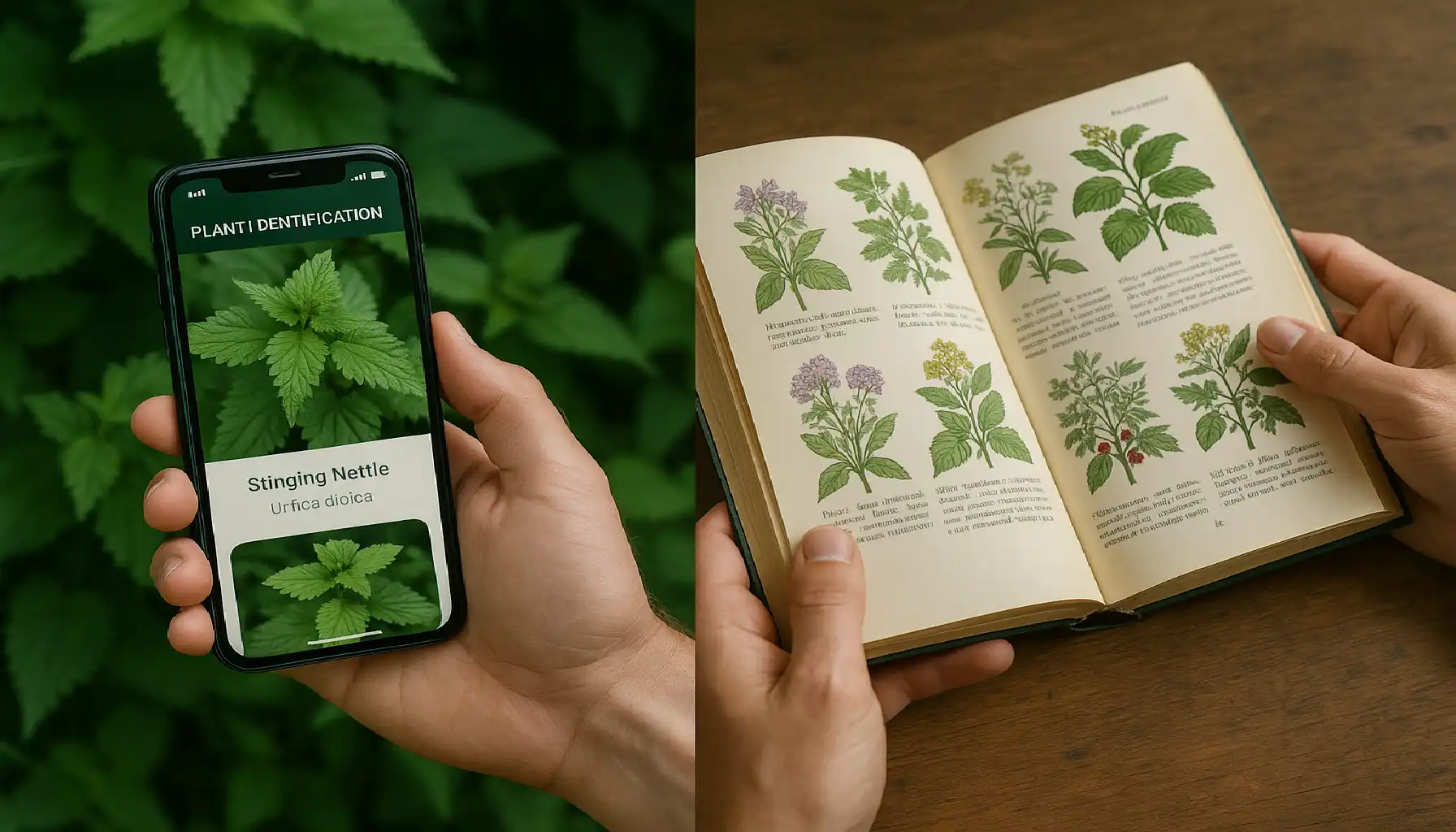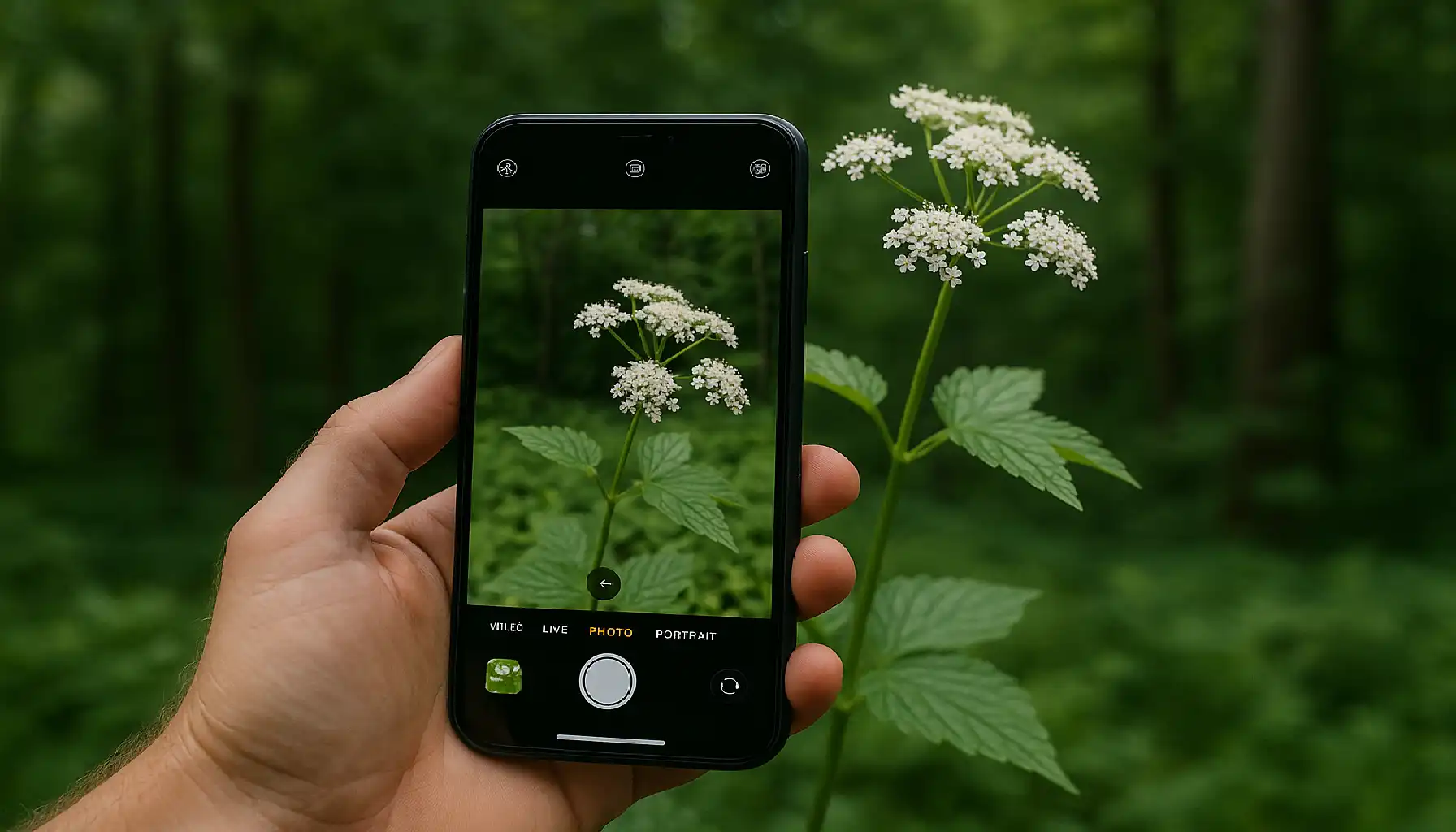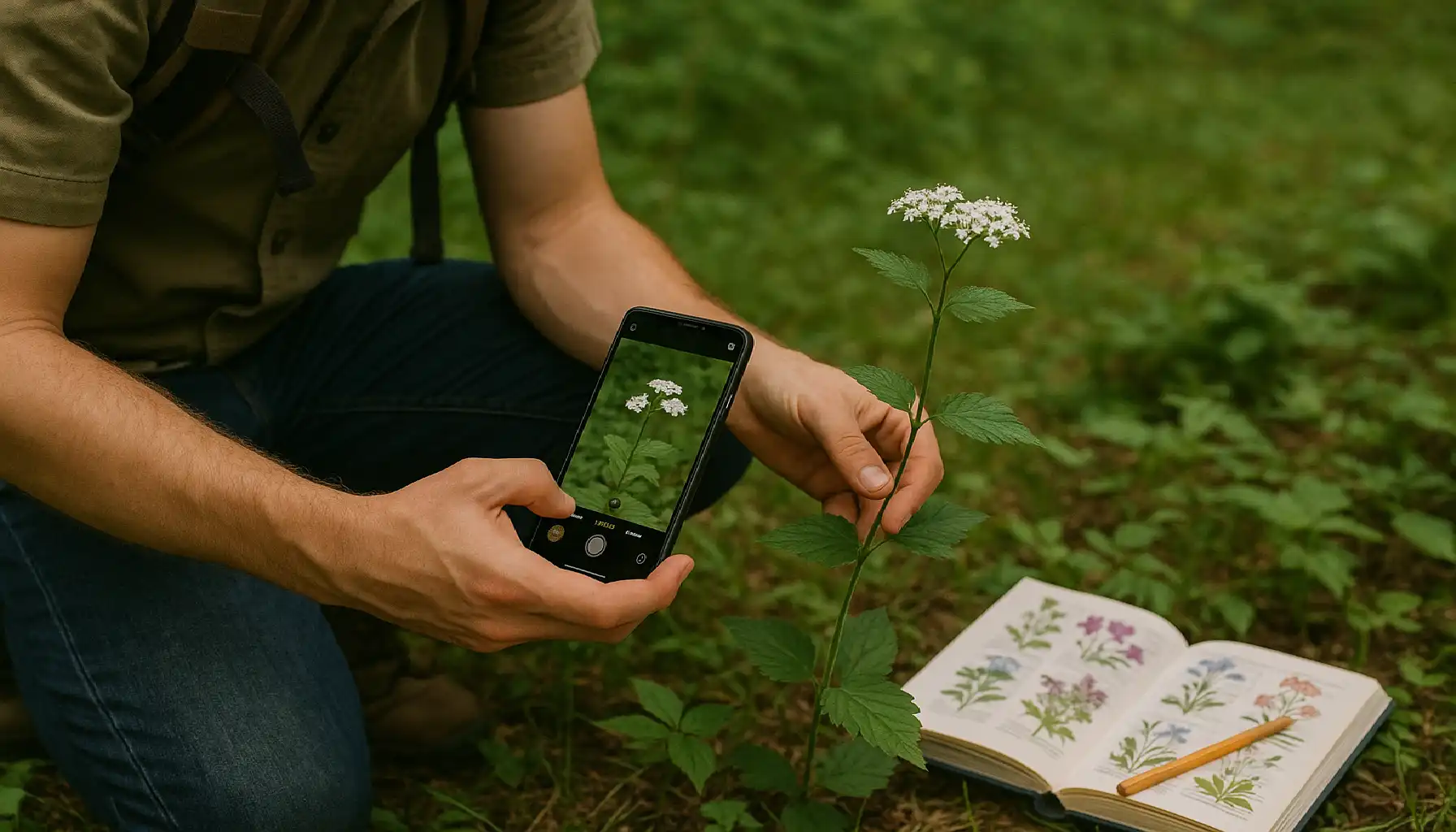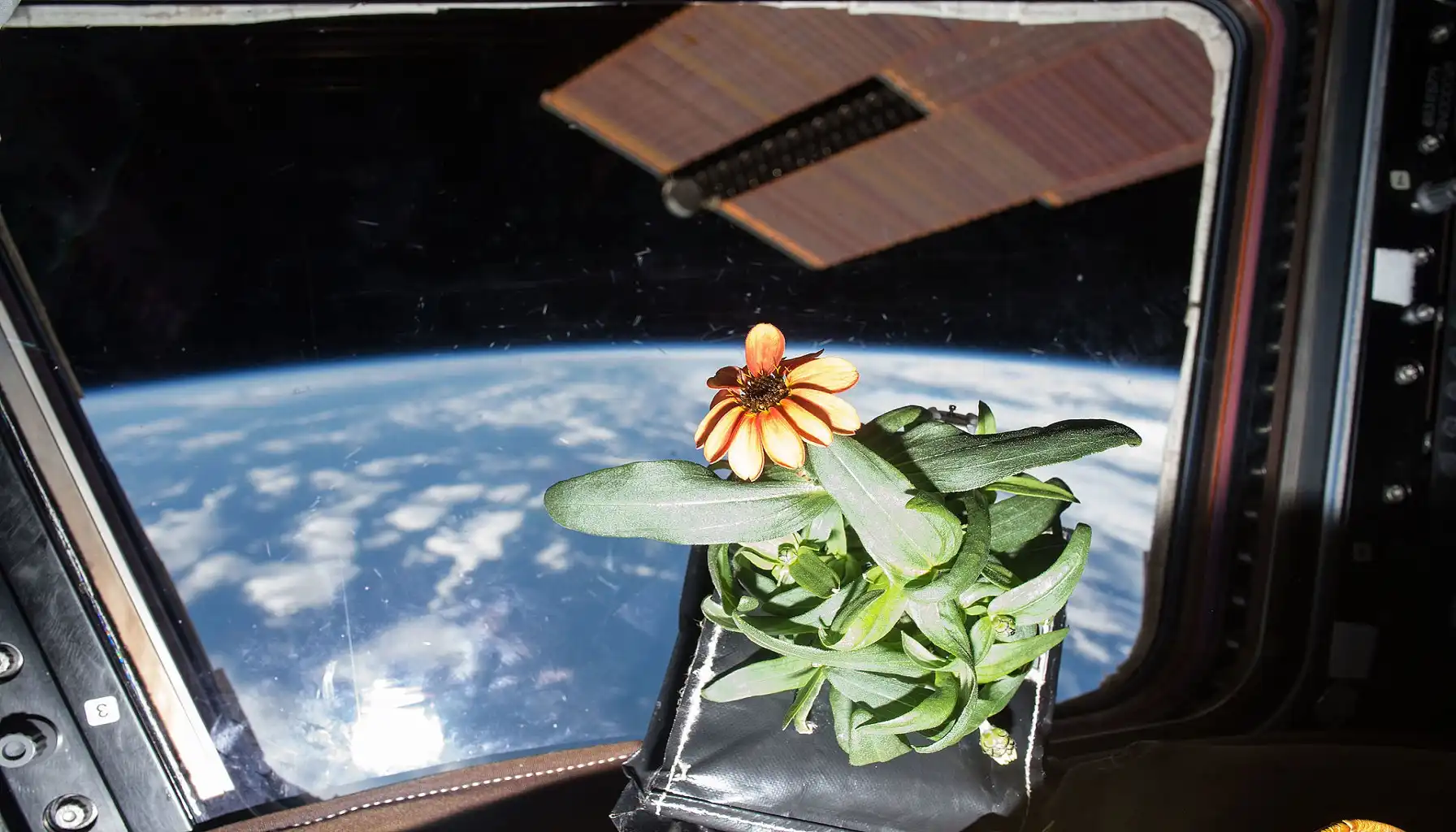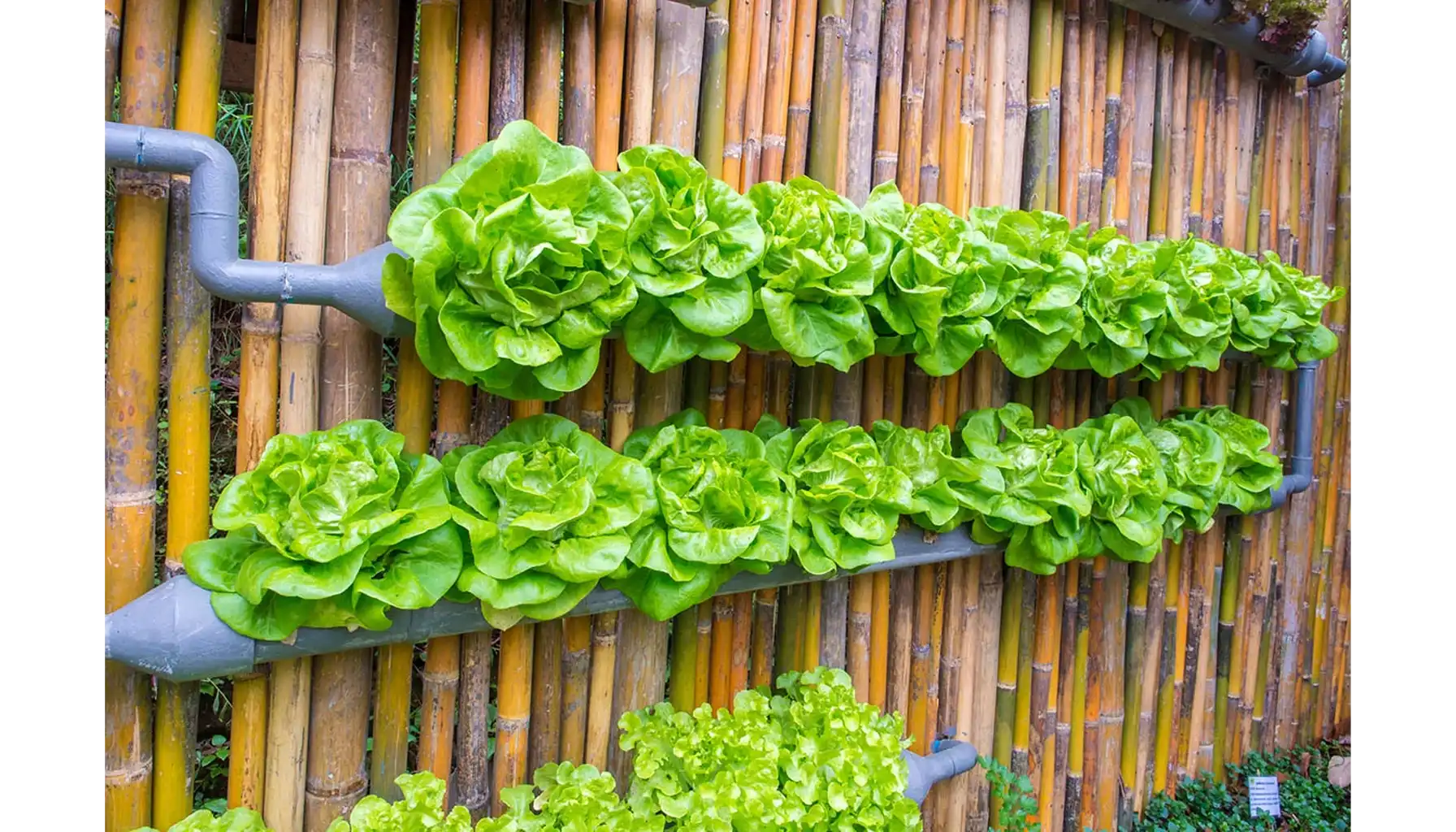.Introduction
The way we identify floral creations has changed. What used to involve hours with a guidebook or waiting for expert feedback now takes just seconds with your smartphone. Now you can just use an app. Gardeners, and curious hikers can identify unknown species from a photo anytime and anywhere.
Apps like the AI Plant Finder app have become popular for a reason. As the best free plant identification app, it has quick answers, disease detection, and care tips, all in your pocket. But are they really better than traditional methods? I will compare both approaches to see which is more accurate and reliable.
What Is Plant Identification?
Identification is when you determine the name and type of a species just based on its visuals like the shape of its leaves, flowers, or growth pattern. It can also include details like habitat, size, bloom time, or fruit type.
Traditionally, this meant using a plant identification book or asking an expert. But these days, apps can handle most of the work. With just one picture, users can access names, care instructions, and even plant pests identification and disease alerts.
Traditional Identification Methods
How It Works
You start with a guidebook or botanical key and compare your features, like leaf shape, flower color, and stem texture, to what's listed. If you’ve ever tried white flower plant identification or any other vague description of greenery like a purple leaf plant identification using books, you’ll know how specific the process can get. It’s precise but time-consuming, and usually best for someone already familiar with botany.
Advantages | Disadvantages |
Extremely accurate for native or well-documented species. | Hard for beginners with no training. |
Deepens your knowledge of plant structure and classification. | Not practical in the field without carrying books. |
Ideal for scientific work and conservation efforts. | Doesn't help with plant disease identification. |
Doesn’t require internet or devices. | Limited to what’s printed or locally available. |
AI and Plant Identification Apps
How They Work
An AI-based plant identification app like AI Plant Finder uses computer vision and machine learning. You take a picture of the plant, and the app compares it against a massive image database to deliver a likely match. You can use it for identification by photo, check for pests, and even get reminders for watering.
A plant identification online tool is ideal for both indoor and outdoor plants. If you’re unsure of what kind of species you encounter, the app has a diagnosis and care suggestions.
Key Features of AI Plant Finder:
Free to use with optional upgrades
97% recognition accuracy for species
98% accuracy for disease detection
Identifies houseplants, wild, and exotic species
Offers care advice, reminders, and even lighting guides
Works well for indoor palm identification, succulents, and more
It has become one of the best plant identification app options for beginners and plant enthusiasts alike.
In the wild, accuracy matters. AI can give you a general result, but it’s best to confirm with a field guide or expert. Ginseng has lookalikes that can be toxic. For safety, especially with poison oak five leaf plant identification, go old-school or double-check app results.
How Accurate Are They?
Experts using guidebooks or taxonomy are almost always correct, especially for native species and known varieties. They also understand nuances like habitat, seasonal variation, and hybrid traits.
Modern apps are surprisingly reliable. AI Plant Finder has 97% accuracy for species and up to 98% for plant disease identification. So it’s more than capable of identifying a wide range of issues, including indoor vine plant identification, spotting black spots on roses, or diagnosing yellow leaves on palms.
Educational differences: using a plant identification book teaches you about structure and terminology. You learn to observe closely, what are the leaf margins? How is the flower arranged?
Apps have a different kind of learning. They’re more interactive and come with built-in information. If you need a wild ginseng plant identification, for example, you’ll also get tips about when it blooms, what kind of soil it prefers, and how much sun it needs.
Each has its strengths:
Books are best for deep, long-term learning
Apps are ideal for immediate, real-world application
Accessibility and Convenience
This is where AI wins outright
Apps are portable, fast, and don't require prior knowledge
You don’t need to know the difference between opposite and alternate leaves to get an answer
You can use it for plant identification by leaf, stem, or full picture, even indoors
Best Free App: What Makes It Stand Out?
A best app should have more than just the name. Here’s what sets apps like AI Finder apart:
Intuitive interface
Fast identification via multiple photo uploads
Disease detection
Recommendations based on location and light
High accuracy for both native and ornamental species
The app continues to support you taking care of the plant. But, despite how useful they are, apps have some limits:
Rare or newly hybridized plants may not be in the database
Image quality matters, a blurry photo can confuse the AI
Similar-looking species may be misidentified, especially with close genetic relatives
If you're unsure, double-check your result using a second method. For example, confirm your pink flower plant identification in both the app and a local gardening group.
Can You Trust Online Apps?
In most cases, yes. Apps are constantly updated with new entries and improved recognition algorithms. They are particularly reliable for indoor plant identification, flowering ornamentals, and many common outdoor species. Still, if you're working on conservation, invasive species management, or medical research, traditional taxonomy is safer.
Final Thoughts: Which One Is Better?
It depends on what you're trying to do. Use AI-based apps like AI Plant Finder if you're a home gardener, hobbyist, or someone who needs fast and reliable identification. Stick to traditional methods if you're involved in detailed ecological research, identifying wild edibles, or working with dangerous lookalike species.
In truth, the best result is when you use both approaches. Use AI to get a fast suggestion, then confirm with an identification book or community feedback. You can also ask your local botanic community, visit a botanical garden or somewhere on a forum.
Just remember that when you encounter something, don’t try to touch or especially taste it, even if it looks like something edible. Some trees, bushes and other things may be toxic or you may be allergic to them without even knowing that. The same thing is to take a sample of a particular species and bring it home. This is dangerous because if you have pets or kids it might be pretty lethal. Some release spores or are just dangerous when you touch them, so always be careful.
Read more about it at Deadly Dangers: A Few Poisonous Plants to Avoid in the US
AI Plant Finder Related Posts
